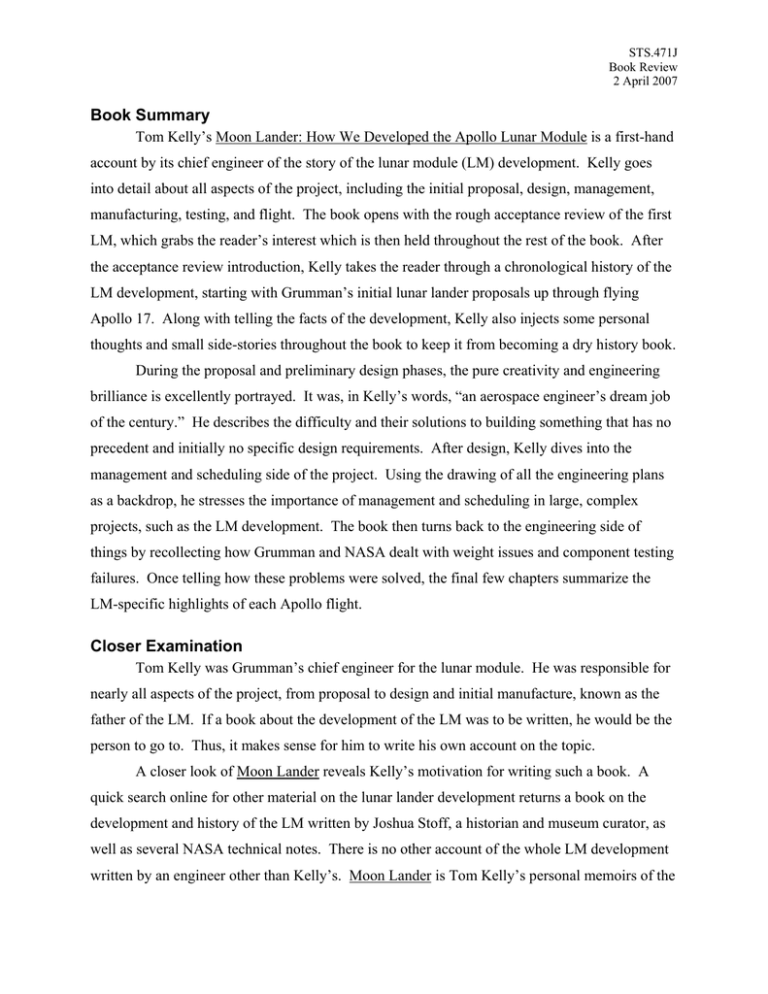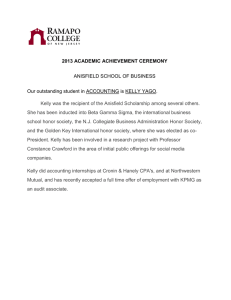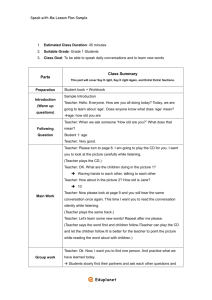Book Summary
advertisement

STS.471J Book Review 2 April 2007 Book Summary Tom Kelly’s Moon Lander: How We Developed the Apollo Lunar Module is a first-hand account by its chief engineer of the story of the lunar module (LM) development. Kelly goes into detail about all aspects of the project, including the initial proposal, design, management, manufacturing, testing, and flight. The book opens with the rough acceptance review of the first LM, which grabs the reader’s interest which is then held throughout the rest of the book. After the acceptance review introduction, Kelly takes the reader through a chronological history of the LM development, starting with Grumman’s initial lunar lander proposals up through flying Apollo 17. Along with telling the facts of the development, Kelly also injects some personal thoughts and small side-stories throughout the book to keep it from becoming a dry history book. During the proposal and preliminary design phases, the pure creativity and engineering brilliance is excellently portrayed. It was, in Kelly’s words, “an aerospace engineer’s dream job of the century.” He describes the difficulty and their solutions to building something that has no precedent and initially no specific design requirements. After design, Kelly dives into the management and scheduling side of the project. Using the drawing of all the engineering plans as a backdrop, he stresses the importance of management and scheduling in large, complex projects, such as the LM development. The book then turns back to the engineering side of things by recollecting how Grumman and NASA dealt with weight issues and component testing failures. Once telling how these problems were solved, the final few chapters summarize the LM-specific highlights of each Apollo flight. Closer Examination Tom Kelly was Grumman’s chief engineer for the lunar module. He was responsible for nearly all aspects of the project, from proposal to design and initial manufacture, known as the father of the LM. If a book about the development of the LM was to be written, he would be the person to go to. Thus, it makes sense for him to write his own account on the topic. A closer look of Moon Lander reveals Kelly’s motivation for writing such a book. A quick search online for other material on the lunar lander development returns a book on the development and history of the LM written by Joshua Stoff, a historian and museum curator, as well as several NASA technical notes. There is no other account of the whole LM development written by an engineer other than Kelly’s. Moon Lander is Tom Kelly’s personal memoirs of the STS.471J Book Review 2 April 2007 project as well. The book was published in 2001, and Kelly passed away in 2004. His motivation for the book was most likely to get his personal story of Apollo written down as a historical piece so it would not be lost when he died. In the book he is portrayed as the hero; without him, it suggests that the LM would have been doomed to failure. Kelly does not want the reader thinking he is self-centered, and he continually reminds the reader about the scale of the project and the huge number of people who contributed. While he does not deny he was a key player in the success of the LM, he also points out several others who were irreplaceable in both Grumman and other sectors of the Apollo program. It could be argued that Moon Lander is a primary source in itself because its author was the chief engineer of the project. However, it was written 30-35 years after the events took place and discusses aspects of the project that Kelly was not directly involved with, which suggests it as a secondary source. I see it as a combination; it is both a primary and secondary source, depending on what topic is being discussed. The majority of the book is a primary source, as it discusses events in which Kelly was a key character such as the proposal and design chapters. Secondary source aspects include the Apollo flight chapters, and the chapter on the Apollo 1 fire. Also, a large portion of the end notes are Kelly’s own engineering notebook entries—mainly when specifics are mentioned could not be remembered 30 years later. This suggests that the time between the project and the book being written has cut into the purity of the book being a primary source. Decision Discussion A chapter in Moon Lander is called “Trimming Pounds and Ounces.” Here, Kelly goes into detail about the realization that the LM was going to be vastly overweight and the decision to put it on a crash-diet. The program created was called SWIP—the Super Weight Improvement Program. This was combination of an engineering decision and political decision; if it had not been done, the LM would have been 2,000-3,000 pounds overweight and too heavy for the Saturn V to send to the moon. The main non-technical consideration in making the decision to spend millions to cut the LM weight was that if it was not done, the moon mission may not have been possible in 1969 with the current hardware. While vonBraun promised a payload capacity increase of the Saturn V in a few years, the excess LM weight would have STS.471J Book Review 2 April 2007 unacceptably postponed the first moon landing. It was an engineering decision in that the LM’s projected weight was higher than requirements allowed, and it was the engineers’ job to bring the weight within specifications. Kelly discusses how vital weight was in the LM; for every pound added to the ascent stage, the reflected weight to the launch vehicle was four pounds, as opposed to 1.15 to 1 for aircraft. As a part of a larger project, it was Grumman’s job to hold up their end of the overall design. Considerations on what parts of the LM to cut weight on also had technical and nontechnical aspects. The structure itself was focused on, as it made up a large fraction of the LM weight and was relatively simple to carry out. While weight was being cut back all over the LM, a power system change from fuel cells to batteries actually added an estimated 200 pounds. Here, the technical consideration of simplicity outweighed the weight savings. A limit of $10,000 per pound of savings was used as a spending ceiling in deciding what was worthwhile to lighten. While technically possible, the non-technical budget considerations outweighed some of these decisions. Relevance to Apollo Moon Lander is a central piece to the course and fits perfectly within the course description. From the course syllabus, “Emphasis is on how the systems worked, the technical and social processes that produced them, mission operations, and historical significance.” This book is a great account of the design and developmental processes of the LM, and it also dives into the management side of the project. It gives the reader an inside view of how a huge project such as Apollo is run and broken down into smaller, more manageable pieces. Kelly’s book fits well into Launius’s categorization of the telling of the history of Apollo as well. He uses it as an example of “high-technology management and systems engineering” in discussing his Apollo Technology category. It is best suited in that category, as the book’s main topic is the development of new vehicle never before developed—the lunar module. While it only tells one section of the Apollo program and not the entire story, it does focus on a vital piece of equipment. Also, a number of themes from the book such as engineering creativity, management issues, and scheduling problems are very similar to other parts of the program. Word Count: 1,265




